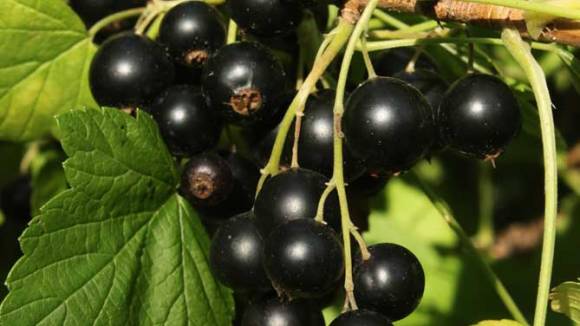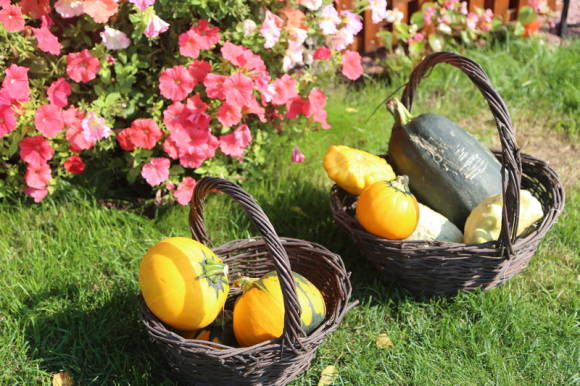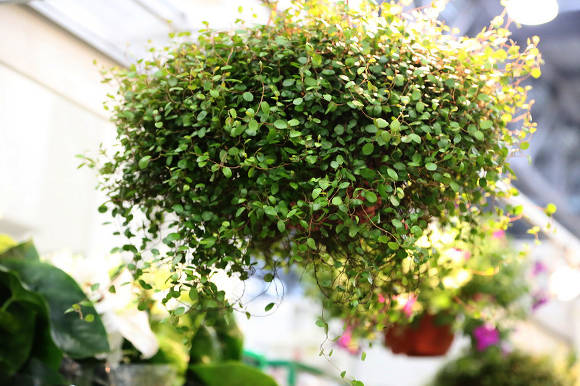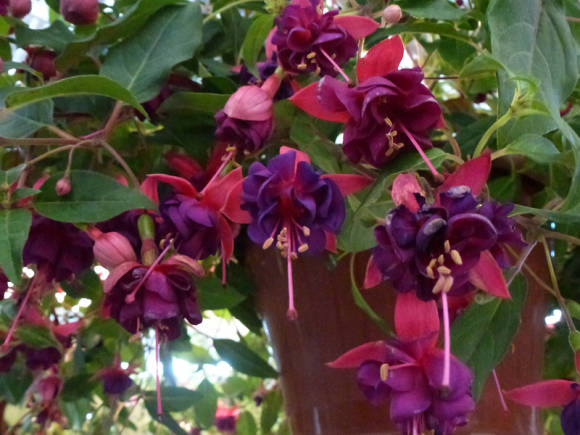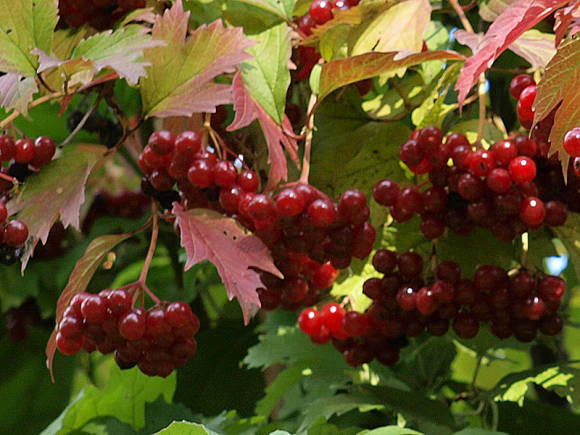
Viburnum ordinary (Viburnum opulus) - branched shrub or small tree 1.5-4 m high from the honeysuckle family with grayish-brown fissured bark of trunks and bare branches. As a medicinal plant, it does not need advertising.
Bark is the main medicinal raw material
On the site, viburnum is planted most often as an ornamental plant and to obtain fruits, which in modern varieties are not only useful, but also very tasty. But you still need to start with the raw materials, which are the main pharmacologically for the viburnum - this is the bark, which is harvested in the spring, during sap flow (in April-May), when it is easily separated. But remember that decorative types of viburnum are not suitable for this purpose. You need to be sure that it is the common viburnum that grows on your site. It should be collected from lateral branches, not old, 2-3 years old, and even more so without affecting the main trunk. On the cut branches, make circular cuts with a knife every 25 cm and connect them with longitudinal cuts; after that, the bark is easily removed. You can combine spring pruning with raw material harvesting. The shelf life of raw materials is 4 years.

Viburnum bark contains viburnin glycoside, resins, tannins and other substances; fruits - invert sugar (up to 32%), tannins (up to 3%) of the pyrocatechol group, isovaleric, acetic, caprylic, butyric, linolenic and palmitic acids. In addition, the bark contains vitamins C and K, which have a high hemostatic effect. It is thanks to vitamin K that nettle also has a hemostatic effect.

Viburnum bark is used as a hemostatic agent, mainly for uterine and hemorrhoidal bleeding, in the form of a decoction, which is prepared from 1 teaspoon of bark and 1 glass of water. Take 1 tablespoon 3 times daily before meals. Externally used for lotions and instillation into the nose for bleeding from the nose. You can use the bark in the form of an extract, which is obtained by pouring 1 part of the viburnum bark with a 50% alcohol solution (10 parts). The extract is administered orally, 20-30 drops, 2-3 times a day before meals.
Both the decoction and the extract can be used for rinsing with periodontal disease and bleeding gums.
A decoction of the bark and young leafy flowering shoots is drunk as an analgesic, expectorant, antispasmodic, and also a sedative. It is taken with diathesis. In addition, patients with diathesis successfully use a decoction of a mixture of viburnum bark and chamomile (in a ratio of 1: 4).
Both the decoction and the viburnum bark extract have a hypolipidemic effect and reduce blood cholesterol.
Fruits are also delicious medicine.
In domestic folk medicine, in addition to the viburnum bark, fruits collected after the first frosts, when they acquire a sweetish taste, are used, as well as flowers, juice and seeds of viburnum. But it should be remembered that each cycle of "freeze-thaw" on a branch leads to a loss of vitamin C. Therefore, it is most effective to freeze the fruits in the freezer, having previously separated them from the stalks, and store so until the moment of use. The fruits are well kept fresh, suspended in clusters in the attic. They are used as needed. In this form, the viburnum is stored almost until spring, and this is how the stocks were stored in Russian villages - sugar was a luxury item and cooking was not made from all the gifts of the site, but they tried to do with other harvesting methods.
 |  |
Viburnum fruits are harvested during their full maturity in dry weather, cutting or breaking off along with the stalks. You can air dry them under awnings, in attics, hanging in bunches, but it is best to dry them in ovens and dryers at a temperature of 60-80 ° C, making sure that the raw materials do not burn. The dried fruits are separated from the stalks and twigs.
Fruits contain up to 20% dry matter, up to 11% sugars, 3.1% organic acids, pectin substances that adsorb everything bad that accumulates as a result of the digestion of unhealthy foods like smoked meats and fast food, 40 mg% vitamin C, tannins and dyes, P-active polyphenols (strengthens capillaries), flavonols. The seeds contain fatty oil (up to 21%).
An infusion or decoction of berries is used orally for stomach or intestinal ulcers, boils, carbuncles, eczema, skin ulcers. Juice from raw berries is recommended externally for acne, freckles, lichens, internally - for bronchial asthma and hypertension. A warm decoction of berries with honey is good for colds. - cough, hoarseness, choking, fever, diarrhea, dropsy, liver disease and jaundice.
Berries boiled with honey (see Kalina simmered with honey, Kalina in honey), take 1 teaspoon several times a day for coughing and related symptoms such as choking and hoarseness, as well as loss of voice.
There are recommendations for hypertension and heart disease, it is better to eat berries with a bone. This is probably due to the fact that the seeds contain a lot of fatty oil, which is useful for the prevention of atherosclerosis.
When coughing for those who are not contraindicated in alcohol, the following recipe is used in the Balkan countries: A glass of viburnum juice is mixed with 100 g of brandy and 2 tablespoons of honey, mix thoroughly and take 1 tablespoon 3 times a day with a strong cough. The big plus with this recipe is that this mixture keeps pretty well in the refrigerator.
Berries, infused with hot honey for 6-7 hours, are used for bronchitis, pneumonia and liver diseases (See Viburnum medicinal tincture). Infusion of flowers and leaves gargle with sore throat.
Fresh berries and infusion of them are useful for gastritis with decreased gastric secretion. It is recommended to eat daily 1-2 cups of viburnum berries with honey, adding it to taste. According to traditional healers, it also helps prevent gastrointestinal cancer.
With polyposis of the intestine or stomach, in order to avoid malignant degeneration, it is recommended to carry out an annual course of treatment with viburnum. In autumn, within 4-5 weeks, it is recommended to eat 2-3 handfuls of fresh viburnum berries on an empty stomach. And in winter, dry fruits with young twigs are brewed and drunk 3 times a day for 1/3 cup. Fresh and frozen fruits are also useful for hypertension. They have a beneficial effect on overall well-being and improve the condition of blood vessels.
Outwardly, the juice of fresh or thawed berries helps with acne, acne and other skin troubles, which is associated with its antiseptic and antioxidant effect.
Viburnum fruits are used in confectionery for the preparation of marmalade, marshmallow, candy fillings, for making sauces, jelly, jam and pie fillings:
- Filling "Kalinovka"
- Balsam from five berries "Vigor"
- Viburnum and juniper sauce
- Viburnum seasoning with hot pepper
- Viburnum and thyme drink
- Roast with viburnum
- Pies with viburnum
- Viburnum sauce for meat
- Viburnum roll
- Pumpkin jam with viburnum.
But any product may have contraindications - This is a stomach ulcer and duodenal ulcer with high acidity, exacerbation of pancreatitis. This should always be remembered when using viburnum fruits for treatment or as food.
